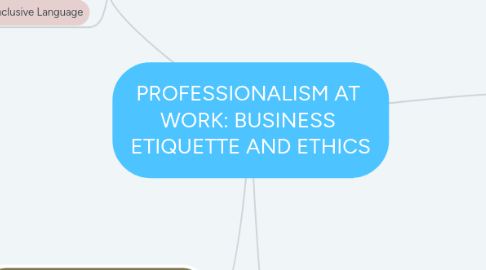PROFESSIONALISM AT WORK: BUSINESS ETIQUETTE AND ETHICS
создатель BRYAN BONG ZI HAO Unknown


1. What is Ethics? - Conventional standards of right and wrong that prescribe what people should do.
1.1. Abiding by the Law
1.2. Telling the Truth
1.3. Labelling Opinions
1.4. Being Objective
1.5. Communicating Clearly
1.6. Using Inclusive Language
2. Three-Step Writing Process
2.1. Step 1 - Planning a business message
2.1.1. Ask the following questions - Who is this business message designed for? - What purpose is this business message written for?
2.1.2. Follow the following guidelines - Know your audience - Audience's expectations - Get to the point - Keep it simple - Use active and passive voices aprropriately - Content - Organisation
2.2. Step 2 - Writing a business message
2.2.1. Modifications that need to be considered compared to an ordinary letter - The salutation - Should be justified or in lbock form - Should contain brief and concise information - Check the message for grammar and spelling mistakes - Font size or style should be easy to read
2.3. Step 3 - Completing a business message
2.3.1. Sending the business message - Address of the recipient should be clearly written and double checked the recipients' address

